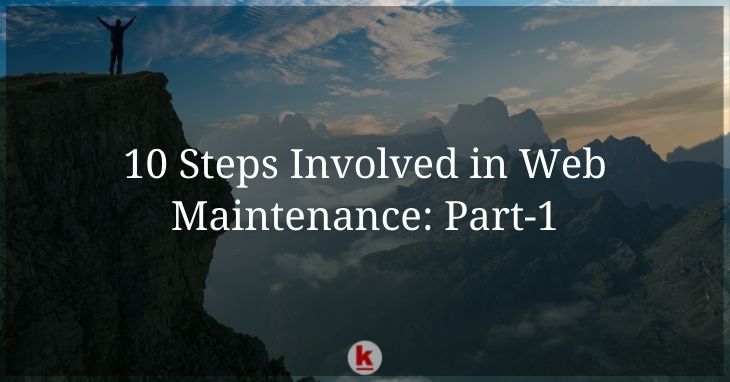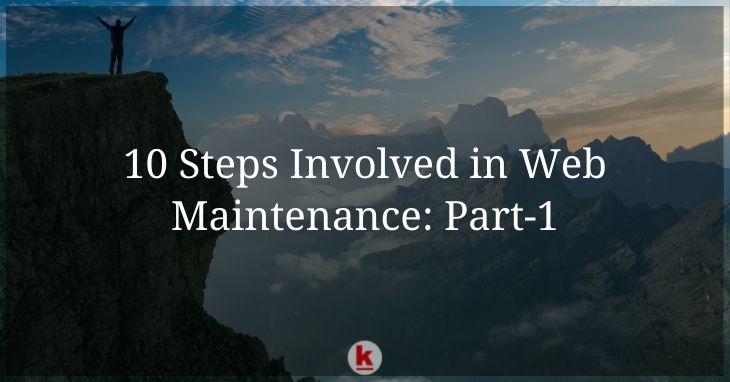
10 Steps Involved in Web Maintenance: Part-1

A website, be it a business one or personal, isn’t a one-and-done venture. You need to incorporate several web maintenance practices to take care of your website. These are related to security, performance, analytics, and much more.
Web maintenance is done to ensure that your website continues to perform the way it’s supposed to and also show improvement over time. You can make use of advanced tools and best coding practices to ensure hassle-free website maintenance.
We list down 5 of the 10 steps involved in web maintenance and the following 5 will be covered in part-2 of the series so stay tuned for that too. Here it goes:
1. Data Backup
Backing up your data at all times is critical to avoid any functionality hiccups in the future. The frequency of these backups depends on the overall web traffic you observe and the confidentiality associated with that data.
High-priority and highly confidential information should be backed up immediately. You can plan more of these in a month’s time to keep the critical information in secured storage in case of a malicious attack cyber breach and also get phishing protection to thwart these attacks.
2. Updating Plugins
Plugins act as a catalyst for your website by improving its performance, accessibility, and functionality. However, you must update them from time to time to retain their efficiency and avoid any intermittent errors.
Today, most websites use WordPress as their CMS, and you can see a significant dip in performance if the plugins aren’t updated. Up-to-date plugins help in web maintenance by improving user experience, reducing vulnerabilities, and a lot more.
3. Perform Speed Tests
Slow loading speed is among the top reasons why many websites have a high bounce rate. Modern-day consumers have a plethora of options, so if your website doesn’t load quickly, they’ll jump to another one in no time.
You can leverage Google’s PageSpeed Tool to perform regular speed tests and incorporate enhancements in case of any deviation. Remember, the faster your website loads, the lower would be the associated bounce rate.
4. Fixing Bugs and Errors
Even the most optimized codes can’t handle all the use cases at once. Therefore, you need to follow an agile approach where you develop and optimize simultaneously. No web maintenance checklist is complete without error and bug fixation.
Be it an incompatibility with any browser, unexpected downtime, button misbehavior, or anything else – you must look into the issue right away and come up with a fix. Each second counts in today’s competitive marketplace, and offering a flawless experience to the user is a virtual necessity.
5. Review Web Analytics
Web analytics help you evaluate your website’s performance on various grounds through optimized KPIs. You get to know your consumer demographics, best-performing assets, and also the ones that didn’t get a positive response from the audience.
Google Analytics is a one-stop solution to all your web analysis requirements. Therefore, you can follow a data-driven approach and make educated decisions regarding the various elements of your website related to SEO, content, and more.
To Conclude
This concludes our website maintenance checklist that’ll help you take care of your website. Stay tuned for part-2 of this series where we’ll share 5 more tips for web maintenance.
Looking for a backend web support partner, drop us a line here